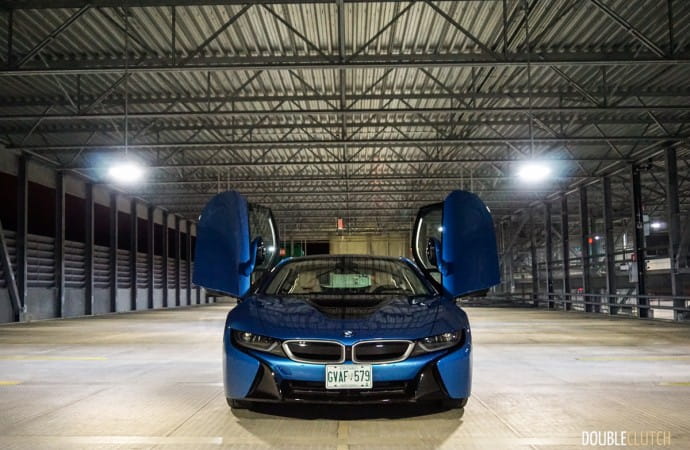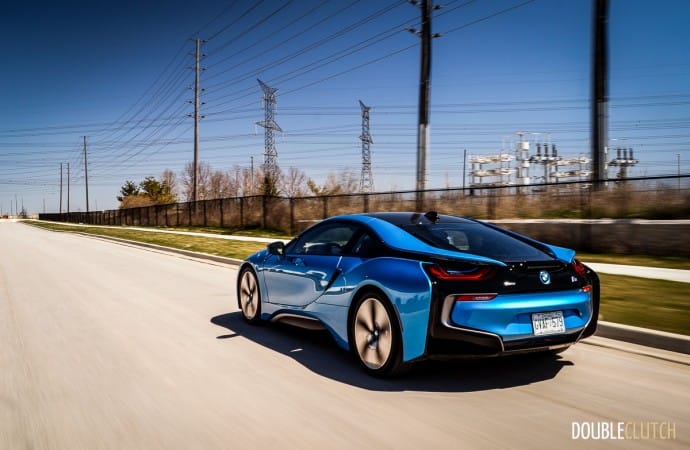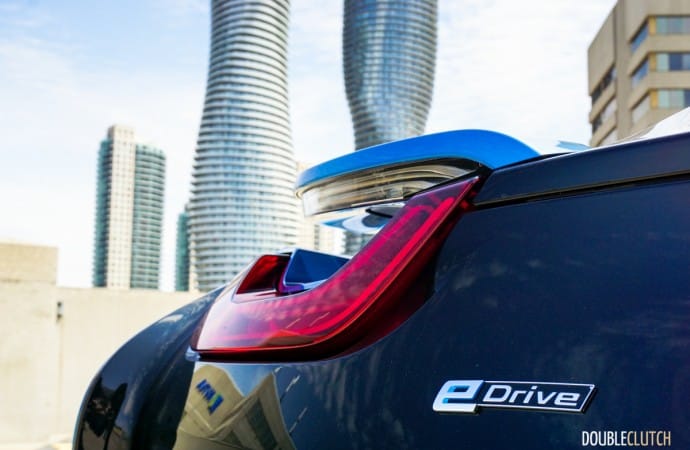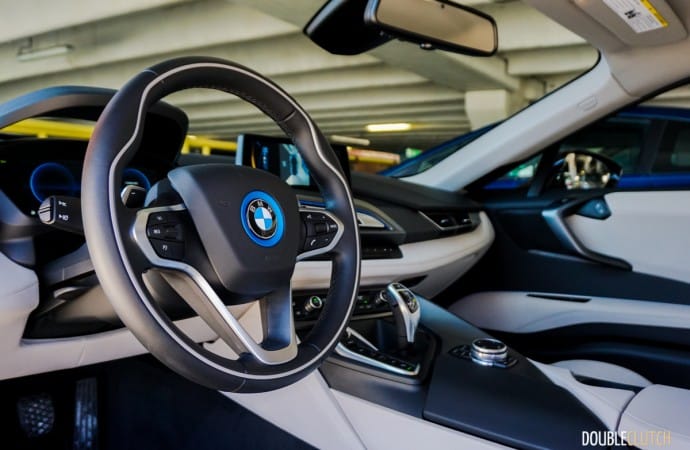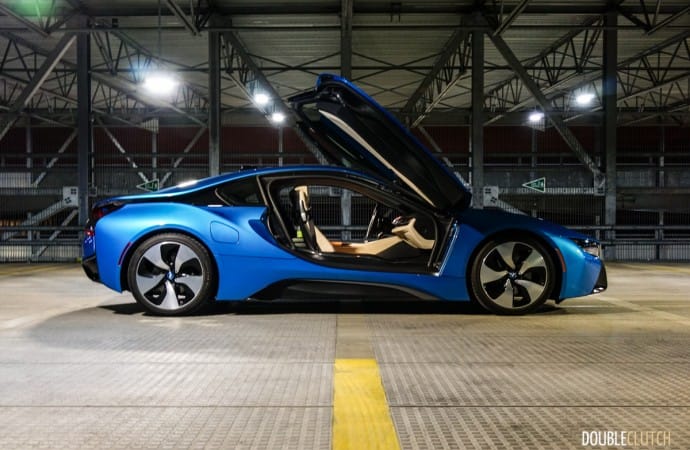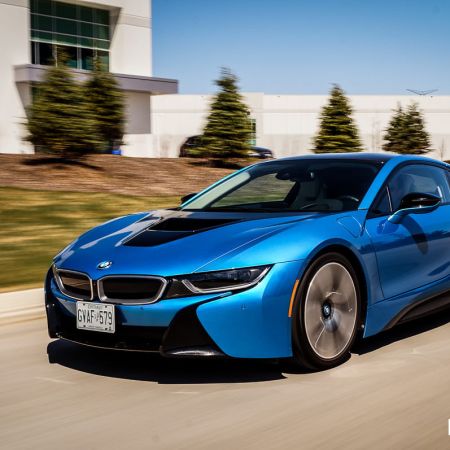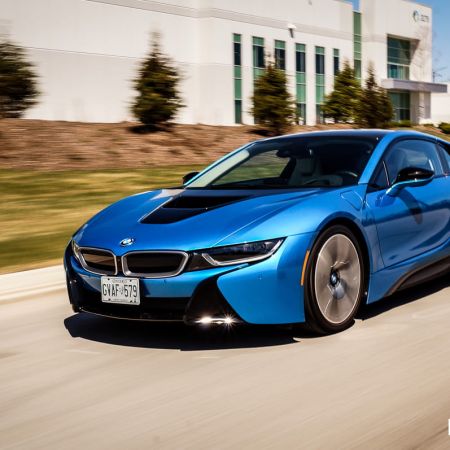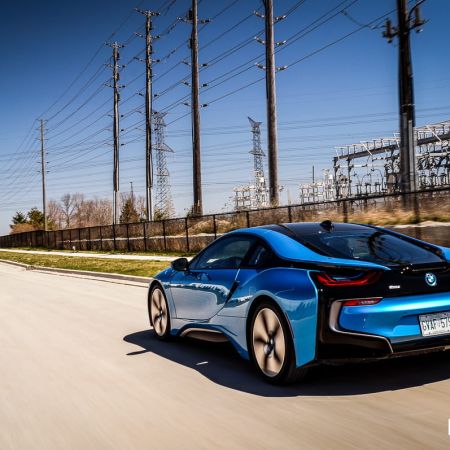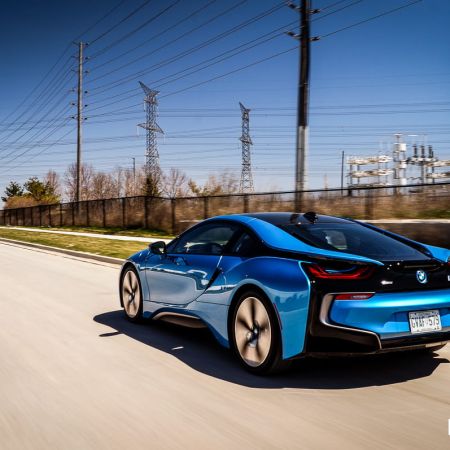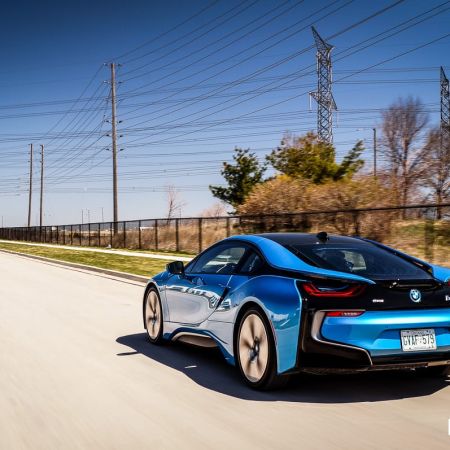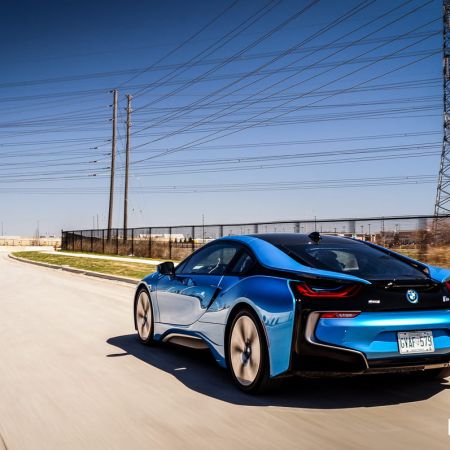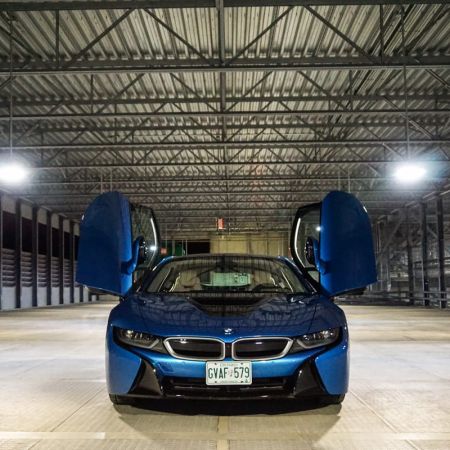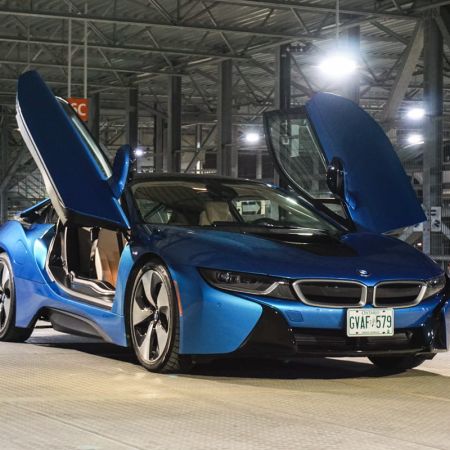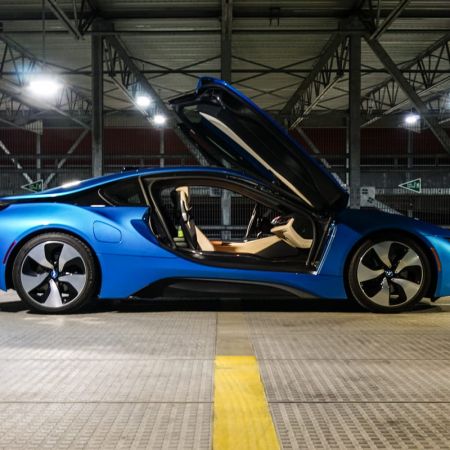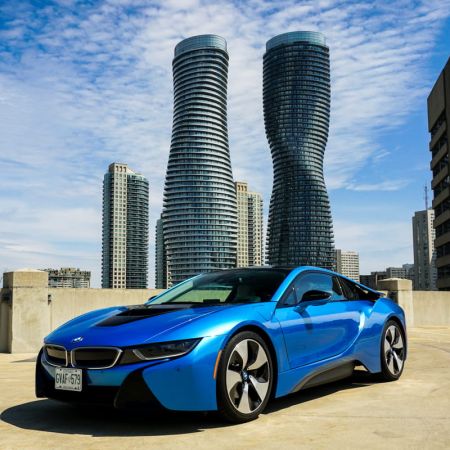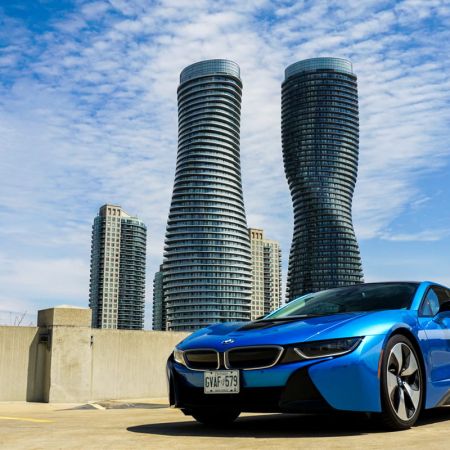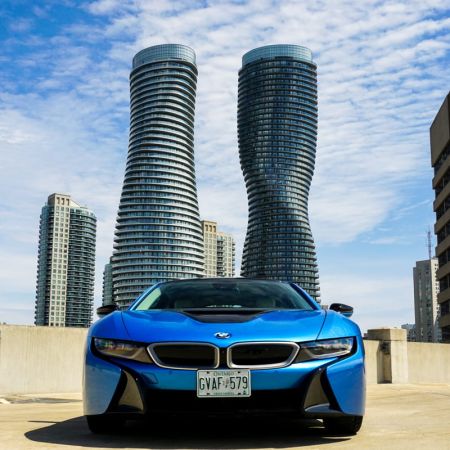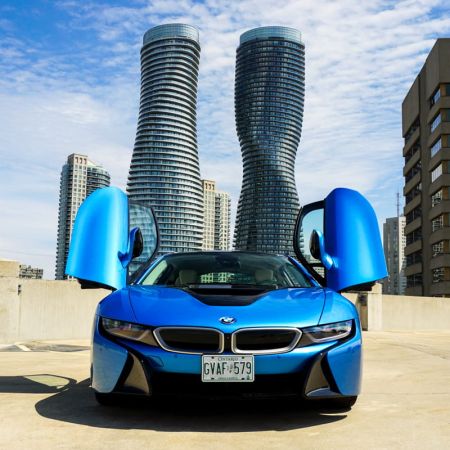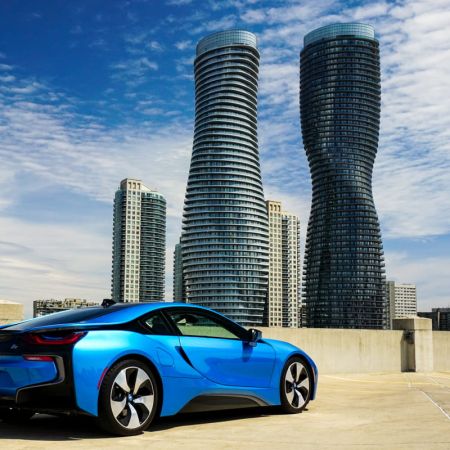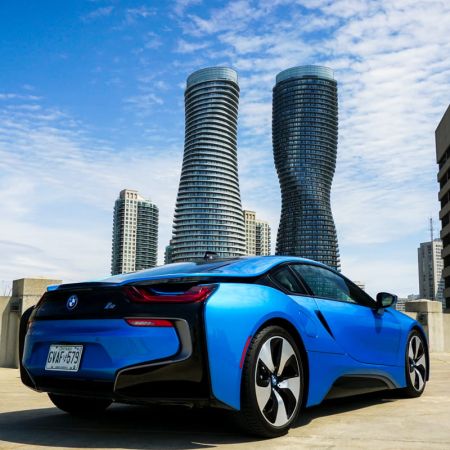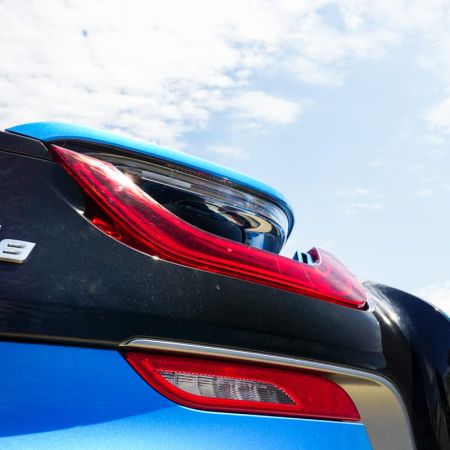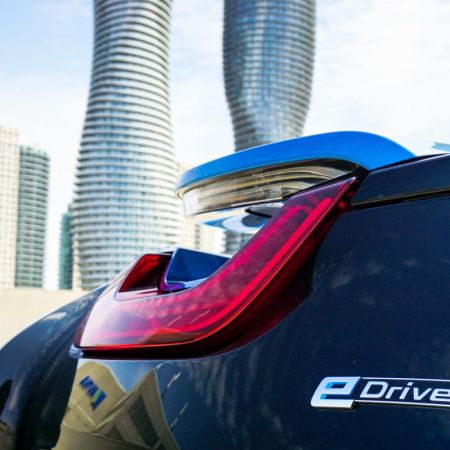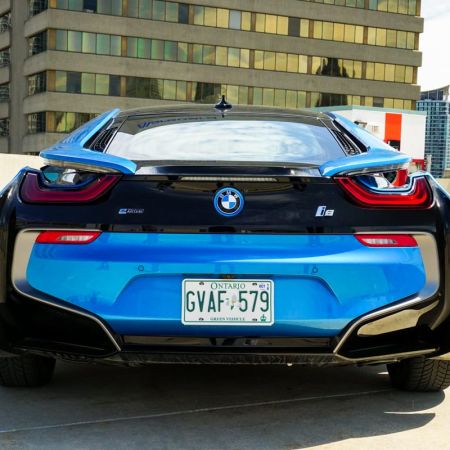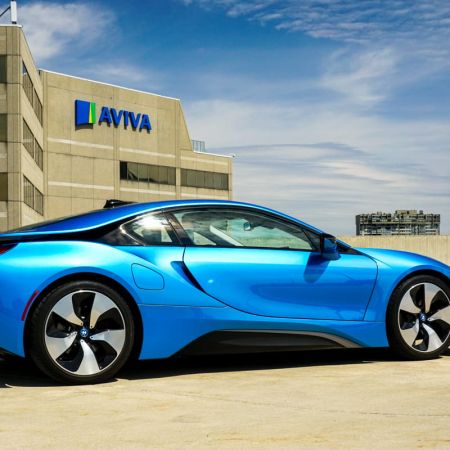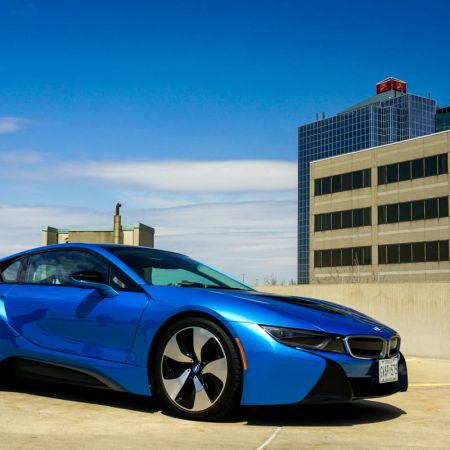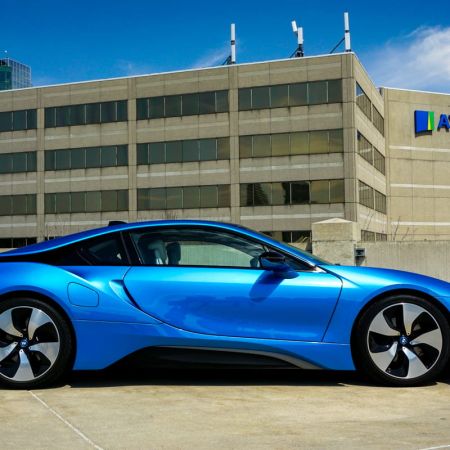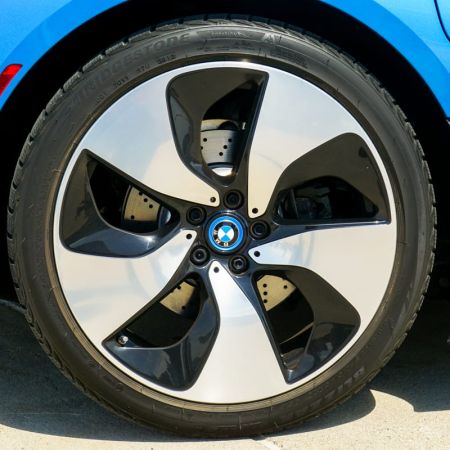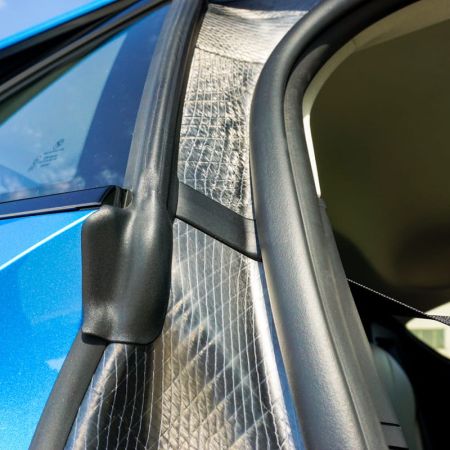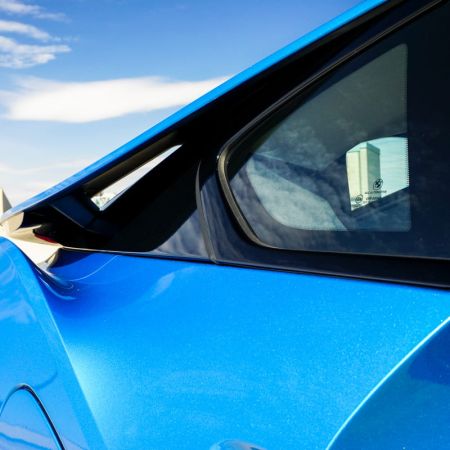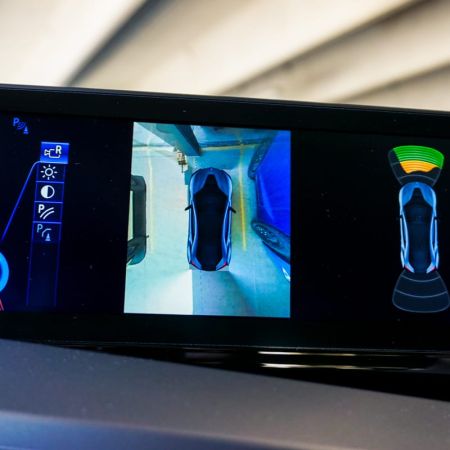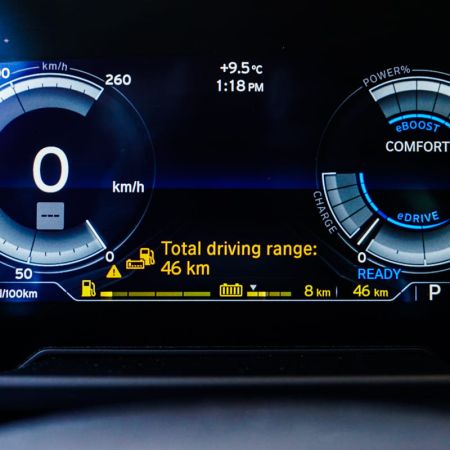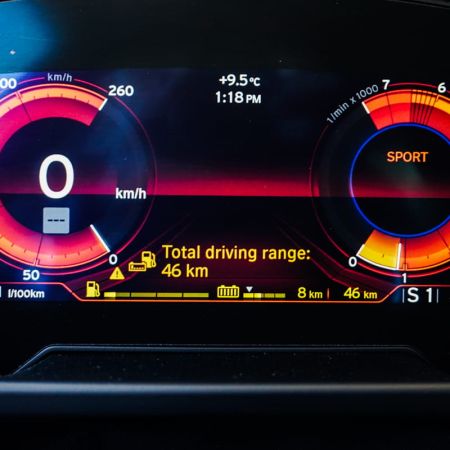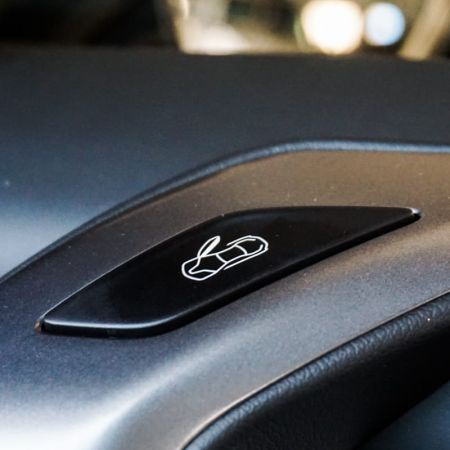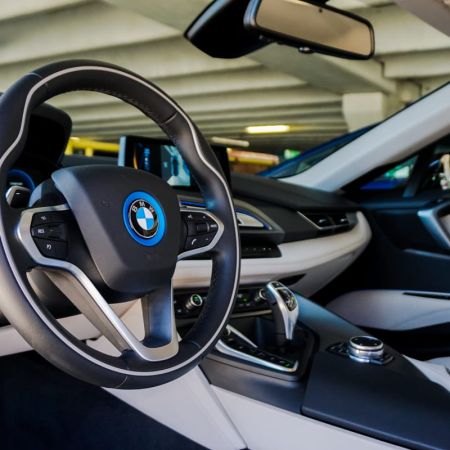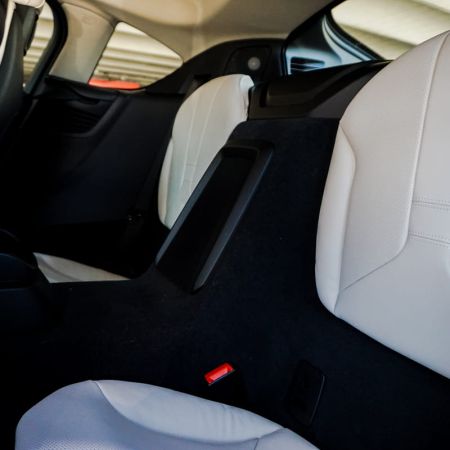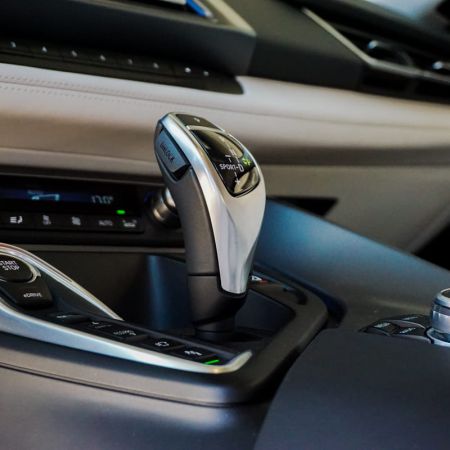Some say the future is the electric car, and others will suggest that it’s autonomous driving that lies ahead. Whatever theory you may follow, it’s essentially agreed upon unanimously that automotive enthusiasts will never become extinct. Those of us that have a genuine passion for cars crave that exhilaration that comes with the sound of a combustion engine, the gorgeous lines of the supercars we grew up dreaming of, and most of all, the overall driving experience. Certain manufacturers respect this more than others, and the 2016 BMW i8 is a car that promises a bright future for the auto community.
We sampled the i8 late last year, and came to the conclusion that it’s a car we needed a little bit more time with. This isn’t a simple car – it’s full of technology, developments, and styling that is groundbreaking in almost every way. Starting with the billionaire doors (the single most eye-catching part of the car) and observing the LED lighting all around – not to mention the most prolific styling of the decade – the i8 is a showstopper regardless of the type of environment it’s in. With a weight of 3,380 lbs., the i8 is almost identical to the latest Audi R8 V10 (reviewed here).
Weight savings is the name of the game with the i8, because the power numbers themselves aren’t all that remarkable. The car is made of all lightweight materials, including a full carbon fiber tub and specially made wheels on 215-series rear tires. The actual carbon fiber is visible in the doorframes as well as on the doors themselves when opened. It oozes exclusivity and feels just as special as it looks – like a bespoke supercar built for the elite, that also exudes an image and reminds onlookers that it still does its part to save the environment.
Perhaps the most interesting part of the BMW i8 is its powertrain. No, it does not have a massive turbocharged V8 or V10; quite the contrary in fact. The rear wheels are propelled by a turbocharged 1.5L three-cylinder engine, the same unit offered on the base Mini Cooper. It puts out 228 horsepower and 236 lb-ft of torque on its own, but it never really functions on its own. The front wheels are powered by an electric motor that puts out 129 horsepower and 184 lb-ft of torque. Since the two motors each power a different set of wheels, the i8 is actually an all-wheel-drive vehicle.
Seeing as this is a green vehicle, there is no slick-shifting six-speed manual available. Instead, the i8 makes do with a six-speed automatic (sourced from the Mini Cooper) mated to the main engine, and an additional two-speed transmission attached to the electric motor. It may not sound special, but when in the “Sport” setting, the transmission makes wonderful noises on both up and downshifts, blipping and revving with confidence, reminding you that this is indeed a supercar of German pedigree.
The extremely low center of gravity and slick allow the i8 to slice through the air and to your destination with an unmatched amount of poise, with a stance that announces to passerby that you’ve made it in life. Not only have you made it, you’ve made the environmentally friendly choice with regards to a frivolous vehicle purchase. The i8’s steering is electrically assisted, so there is a lack of organic, natural feel that comes from caning a similarly priced Audi R8 (reviewed here) through the mountainside. Even still, the hunkered-down driving position is almost reflective of driving something worth multiples of the i8’s price, and the numb steering is almost forgotten.
Lifeless as it may be from an enthusiast’s perspective, the i8’s steering is still fully engineered by BMW, a brand that takes pride in calling their vehicles the “ultimate” in driving enjoyment. We didn’t get a chance to push BMW’s supercar to its limit on the track, but we did spend a week with it, allowing us to accurately learn and analyze its behavior. The i8 handles spirited driving situations with the utmost of ease, not even hesitating for a single second. Even though combined horsepower is just 357 and torque is 420 lb-ft, the car feels considerably quicker and extremely dynamic when soaring across the highways and deserted backroads.
BMW also understands that even after having spent supercar money, sometimes all the driver wants to do is sit back, relax, and save a few dollars while helping the environment. The i8 is actually a plug-in hybrid, which means it can travel up to 38km on solely electric power. While other hybrids limit EV driving to city speeds, the i8 can hit up to 120 km/h on solely electric power – this is almost revolutionary, and certainly livable for most buyers. Of course, the battery will deplete much faster at higher speeds, but that’s what the gasoline motor is there for.
In the “Sport” setting, the i8 performs at its sharpest, but is also capable of regenerating battery power for later use. A trip from the suburbs into downtown Toronto (about 45km) generated approximately 15km of EV range, which would lead us to believe that the battery can be fully charged in just over 100km of driving. The tradeoff here is that overall efficiency from the gasoline motor will worsen as you try to generate more range. For optimal use, drivers will want to plug the vehicle into an external source at night and start the morning commute with a full battery.
The interior of the i8 is largely the same as the rest of BMW’s lineup, with the addition of a few extra goodies unique to the flagship two-door as well as the top of the new green line. Those who just stepped out of a 340i (reviewed here) will not have a single issue getting used to the i8’s controls, but the stunning and futuristic instrument cluster is a fresh touch. The gauges are digital and adapt to the drive mode and behavior of the car. When in “Sport”, it goes from the economical blue to a fiery orange, and the three-cylinder motor begins to produce a roar almost reminiscent of a supersport motorcycle.
When we tested the Audi R8 Spyder (reviewed here) last summer, we deemed it to be one of the thirstiest cars ever to grace our garage. The i8 offers the same style, flashier doors, and is about the same size, but its fuel consumption couldn’t be more opposite. Throughout our week, we did not have the opportunity to plug the car in, so our EV driving had to be generated by driving in “Sport”. Even still, we averaged about 7.4L/100km despite not trying at all to be green, with a good chunk of city driving thrown into the mix. The i8’s fuel tank will hold 42L of premium fuel.
Just like every other car available for sale today, the BMW i8 has its flaws. For myself and everyone else I came across during our test, the biggest challenge was getting in and out of the cockpit. The doors open very wide, meaning you aren’t getting in or out if there are cars closely parked beside you. If you do happen to get the doors open, the sills are so high that it’s impossible to make a classy entrance or exit, especially for those in dresses. I figured out during my first drive of the i8 last year that the easiest way to pull this off is to first plant my behind onto the sill, then simultaneously slide into the seat while swinging my legs into the cabin. Reverse this process for exit, but I promise – it ain’t pretty!
The 2016 BMW i8 is an interesting exercise – it does a swell job redefining the present while integrating the future as well as maintaining a reminder of BMW’s past. The car is largely form, but without compromise in the function department, retaining a lot of the go to match the show. It may not be as powerful as the redesigned Audi R8, but it has its match with Acura’s upcoming NSX. If anything, this is a McLaren P1 or Porsche 918 Spyder on a budget – a way to get into a hybrid supercar without having to spend seven figures. At just over $150,000 it may be a small fraction of the price, but the BMW is well more than a small fraction of the experience.

